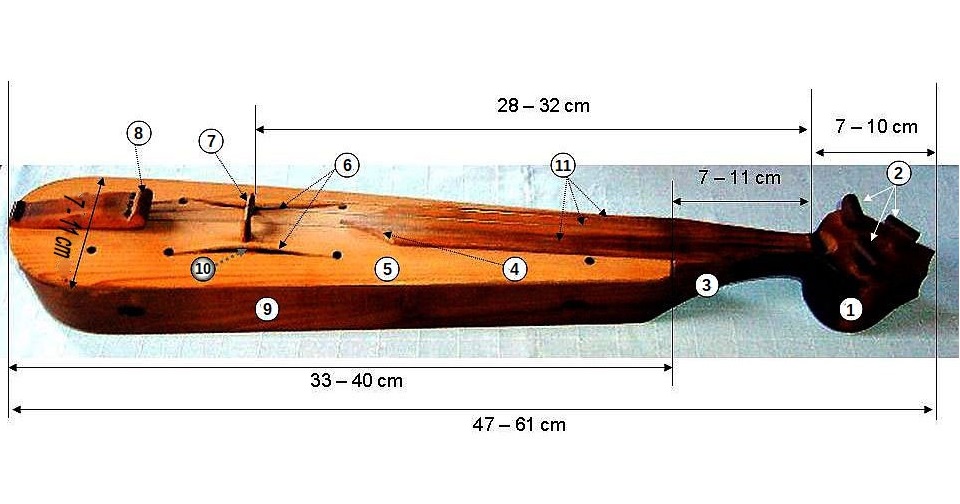The Pontic Lyra (kemenche) is made up of several components, each of which serves a basic purpose. Listed from 1 through to 11, the following are the basic components of the lyra, each of which has a name which describes the function of that particular part.
For instance, the bridge is called a Gaidaron (Gr: Γαϊδαρον) which means 'donkey' in the Pontic dialect. It's function is to carry a heavy load, that of the 3 chords, and it also looks like a donkey saddle. Another example is the Palikar (Gr: Παλικάρ) which means 'strong man' in Pontic. It's purpose is to hold the 3 chords in place at the base of the lyra.
| Component (in Pontic) | Meaning | Component (in English) | |
| 1 | Otia (Ωτία) | Ears | Tuning Pegs |
| 2 | Kifal (Κιφάλ) | Head | Peg Box |
| 3 | Ghoula (Γούλα) | Neck | Hand rest |
| 4 | Glossa/Gravat (Γλώσσα/Γραβάτ) | Tongue/Tie | Fingerboard |
| 5 | Kapaki (Καπάκι) | Cover | Soundboard |
| 6 | Rothonia (Ρωθόνια) | Nostrils | Soundholes |
| 7 | Gaidaron (Γαϊδαρον) | Donkey | Bridge |
| 8 | Palikar (Παλικάρ) | Strong Man | Tailpiece |
| 9 | Skafee (Σκαφή) | Trough | Main Body |
| 10 | Stulari (Στουλάρ) | Post | Sound Post |
| 11 | Khordes (Χορδές) | Strings | Chords |
For more information on the Pontic lyra:
The Pontic lyra (Kemenche)
The Kemenche
